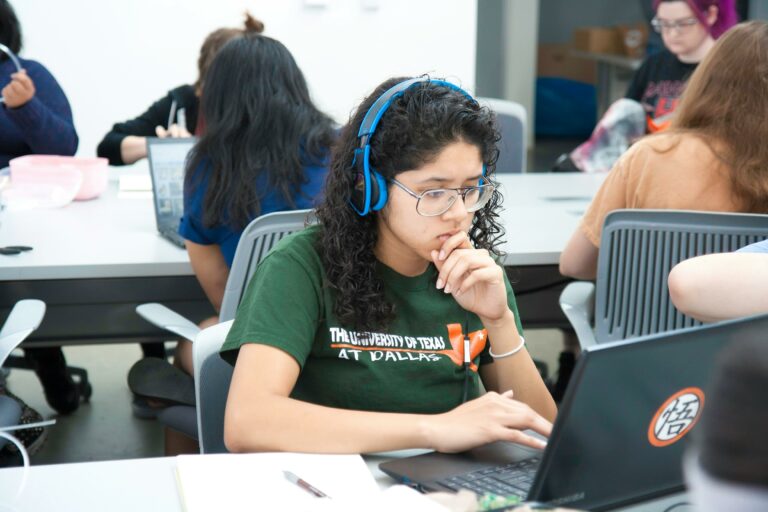
COVID-19 has accelerated digital adoption in the education sector and encouraged educators to innovate and rethink how best to deliver education to students.
The rapid shift to remote learning is perhaps the most immediate example of this, but other initiatives like the setting up of chatbots to deal with the increased call volume and the creation of mental health hotlines to deal with rising stress and anxiety levels have also played an important role in how the industry is responding to the pandemic.
A rapid drop in international student enrolments, the mass cancellation of exams and associated mental health issues, and the need for an en-masse move to remote learning are just some of the factors that are putting the very survival of some educational institutions at risk.
Yet the pandemic is not the only driver of change – in the UK, misalignments between funding in education and national and employer priorities, and an increasing demand for flexibility and personalisation from students is creating a “perfect storm” scenario.
But the challenge for universities and schools alike is not merely a question of balancing in-person and online education – personalised or otherwise – in response to a health and safety challenge. They have to respond to a more complex Rubik’s Cube of socio-political, economic, competitive, and technical challenges.
So, in the eye of this storm, what are the trends that will make sure that education will never be the same again? AWS has been researching the issue and recently published a report identifying a number of factors that are changing the face of education forever.

Flexible learning is here to stay
A blend of online teaching and face-to-face learning is already common among universities, while schools are looking at shorter term strategies as they face up to COVID-19.
At the same time, most educators now agree that personalised education yields better learning outcomes, and technology has accelerated this process. The so-called flip classroom model, where students absorb new materials as homework and use classroom time for discussion, attempts to personalise the process of learning, with some success.
Technology can provide personalised learning assistants to students to remind them of their assignments and offer feedback on their learning experience. Importantly, technology can make assessment more inclusive of students with mental health conditions by allowing them to learn at their own pace, while data analytics also enables teachers to better understand how students are learning and what interventions are needed to support them.
For teaching to be more effective and to deliver on the potential of personalised education, educators agree that they should focus on how students are engaging with the material and use technology to drive engagement and interaction.
Universities will focus more on employability of students
COVID-19 prompted a newfound urgency to reinvent curricula and offer flexible learning. There is also more interest in stackable learning, defined as taking a selection of academic programmes that can stack together to achieve a certificate or degree. For years, community colleges and further education institutions have been adopting alternative certifications in an effort to keep up with the pace of change in the jobs demanded by the labour market.
Stackable learning is a good fit for students balancing their education with full or part-time jobs, not least because it recognises the knowledge and skills gained through activities beyond traditional degree courses like certificates, digital badges, and apprenticeships.
The movement towards graduating employable students is likely to drive academic institutions to adjust their curricula, rebalancing it to the needs of the labour market and government priorities and offering students flexibility through stackable credentials.
Closing the digital divide
Digital learning is here to stay. Yet, many learners do not have access to the technology necessary for online learning, be it devices or a reliable internet connection. This problem is particularly acute for primary and secondary school students. According to the Brookings Institution, less than 25% of low-income countries provide any type of remote learning and only 36 percent of residents of lower-middle income countries have access to the internet.
There are promising solutions that are helping students connect no matter their location. For example, some schools are providing broadband by installing hotspot devices on buses to deploy in areas with no connectivity. The devices are simple to use, compliant with laws protecting children’s access to online content, and their wireless signal can reach homes within a 100-metre radius.
Educators are proving to be resourceful in this crisis. Many are using low-bandwidth technology, including chat apps, to learn and connect with their students, parents, and peers. In countries with no connectivity, educators are resorting to television and radio to deliver education to learners. In countries like Mexico, television teaching is how officials will make sure 30 million students get to learn this year, since 94% of households have TVs but only 60% have an internet connection.

Conclusion
There are other ways that education as we know it is changing too of course, with issues like the mental health and wellbeing of staff and students, privacy and security, impact on research work and a rethink of how to conduct exams and assessments also having a major impact on educational institutions around the globe.
On top of this, issues like declining enrolments, rising health and safety costs, a drop in international student enrolment, and cuts in public funding are posing new financial challenges. But despite these challenges, educational institutions also have an opportunity to innovate and thrive in this era of rapid change and uncertainty.
New technologies are increasingly demonstrating how they can enhance student outcomes, make teaching more effective, and drive collaboration and engagement. To reap the full benefits of technology, educational institutions should embrace a culture of change, using this moment as an opportunity to experiment and innovate to meet the changing needs of their students.

Ken Harley
Ken Harley, Head of UK&I Education for AWS



